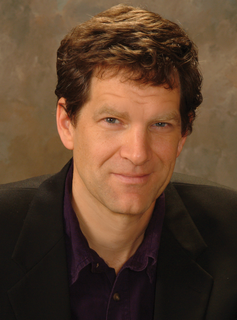
Dear Linux Magazine Reader,
The favorite work stories of many professionals are not about their profession but are about jobs that are decidedly outside of the usual professional experience. A summer job working on the railroad or a temporary gig driving a farm tractor can be an endless source of storytelling moments.
I have a job like that back in my past: an assignment I remember well - not just for the nature of the work but also for the very distinctive sensations of the place: hypnotic repetitions of small tasks in a dark space, the whirring of strange machines, big brown boxes stacked about the floor. Identical rows of workers hunched silently over long tables, zoning out with zen-like absorption, and echoing through the big, drafty space was the click-click of camera-like devices. Perhaps the most poignant part of my memory of this job is the knowledge that it doesn't even exist anymore - it is all in the past, like the Pony Express and the profession of making horse buggies.
The job, if you haven't guessed, was in the once-steady and ever-predictable microfilm industry. My coworkers and I kept busy with the task of turning full-size documents into tiny little pictures. Of course, no one knew how to search for keywords or mine data from these little pictures. They were just filed away under some kind of identifying number or name, and if anyone ever needed to find one of them, a human archivist had to go rummaging through the boxes.
What kinds of records were these? A whole lot of them were medical records: charts with checkboxes from nurses, admission and discharge forms, billing details, and prescriptions and instructions scrawled in the predictably illegible handwriting of busy physicians. Once we finished our work at the microfilm bureau, these records were accessible only to someone who had direct access to the microfilm.
We all knew even at that time that the microfilm industry was on its way into history. Digital database systems soon began to replace those rows of moonlight microfilm technicians. Like most of the software applications at the time, the first generation of these medical database tools were built by big companies with big developer pools, big marketing departments, and big restrictions on the software that allowed the vendor to keep on charging for work that was already finished. You didn't need the microfilm to read the data anymore, but you did need access to the proprietary applications that managed that data in the closed silo of a limited and proprietary environment.
The United States is now at work finding a way to provide universal healthcare coverage for all its citizens. But how do you insure millions of uninsured citizens (many of whom have no money for insurance) without subsidies and starkly higher prices? The answer that is often passed around Washington is to cut back on unnecessary expenses. Most of the press attention is on reducing unnecessary surgeries and doctor visits, but it is no secret among the experts that another piece of the puzzle is to reduce dependence on proprietary and incompatible medical records technologies.
The CONNECT gateway (http://www.connectopensource.org/) is an open source tool that might someday make the old closed-source custom healthcare tools seem as archaic as those microfilm nights seem to us now. CONNECT began through the cooperation of several federal agencies at the end of the Bush administration, and it received a boost of new energy through stimulus dollars targeted for healthcare IT in Obama's first year. The goal of the CONNECT project is to provide a universal, open source interface for accessing information made available through the Nationwide Health Information Network (NHIN). CONNECT, which was recently made available to non-governmental groups, will serve as a means for promoting the standardization of NHIN as a secure, integrated framework for medical records.
The CONNECT gateway is just the beginning of many changes you will see in the next few years for standardizing and integrating healthcare information, and if the Obama administration is serious about controlling costs and promoting competition, open source software is bound to be part of the wellness prescription.